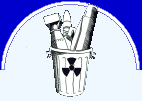


 |
 |  | ||||
|
|
|
|
| |||
| vous etes ici Homepage > News > News Articles > The Halabja Victims | |
|
Poison Gas as Crime against Humanity The Halabja Victims by Jean-Marie Matagne Published 2 September 2013 In Syria, 21 August, a chemical massacre was committed. It calls to mind one of the worst precedents, a crime committed 25 years ago in the Middle East, by a dictator who was at the time considered a friend of France and the West. The text below, hitherto unpublished, dates from March 1988 and formed part of a thesis the author presented in 1991 entitled Le pouvoir et la puissance. (Condensed version of a text placed online in French: 29 August 2013.) (In March 1988 French TV could not resist broadcasting images of the massacre in Northern Iraq. I commend the TV directors’ decision to show them to French viewers, despite the dictator responsible being “our friend in Baghdad”.) A few days ago Défense active reported statements by Jacques Chirac [later president] calling for France to obtain chemical weapons. Now his “dear friend” Saddam Hussein has used gas against the people of Halabja. This time, in March 1988, it was a chemical massacre on a massive scale. Dropped apparently from Mirage-F1 aircraft (possibly some of the dozen which M. Chirac had delivered to Iraq...), the hyperite and cyanide released caused the deaths of thousands of Kurdish civilians. Reportedly 3000 to 5000. In any case, the images of the massacre, filmed in the streets of Halabja by US cameramen, show hundreds of men, women, children, old folk, immobilised while doing their daily tasks, as in Pompeii. Lying on footpaths, piled on trucks, with sometimes a trail of blood on their lips. That definitively deterred them from siding with Iran. We must add that the "Halabja Victims" were Iraqi citizens. In view of how their own nation liquidated them, who could argue against the Kurds’ wish to gain autonomy - from Iraq, from Iran, and from Turkey? But for the Iraqi military that wish was enough to demote them to the rank of animals for slaughter. An order from the Iraqi northern command stated: "All villages where there are saboteurs, traitors to the nation, and supporters of Iran must be considered threats to national security... and as villages to be eliminated: the animals and people of this region must be destroyed.” So the gassing of Halabja and nearby villages was just following orders. The Kurds are a people with their own language and popular traditions, living in a large frontier region. So they could be called the Basques, Jews or Palestinians of Iran, Iraq and Turkey (with groups also in Syria and USSR). Iraqi Kurdistan has three million people, which is one sixth of Iraq’s population and about one sixth of the total Kurdish population. According to Jean-Paul Besset, since the start of the Iran-Iraq War “three thousand Kurdish villages have been destroyed or burnt, several thousand people have been forced to migrate. The massacre is so systematic that it bears a close resemblance to genocide”. Christiane More and Diego Solanas say this: "To Baghdad the purpose seems to be creating terror so as to empty out the inhabitants from the villages and towns located in ‘sensitive’ zones. So these people are swelling the flow of refugees into the cities, which the army controls. The gases, especially hyperite, impregnate the soil and prevent for years all attempts to return. This is a form of the well-known ‘burnt-earth’ technique. "Yet in Halabja we cannot say that Iran has played a good role: according to Kurdish NGOs, the Iranian Pasdarans prevented the people from leaving the town in spite of warnings given by the Iraqi army before the bombardment. "The Kurds are once again the victims of the states which divide up their region and decide their fates. Their often conflicting political organisations (...) play a subtle game of crossed alliances with Iraq and Iran. At present, the behaviour of the Baghdad regime has tipped the balance in favour of Tehran, despite the Iranians’ refusal to allow its own Kurds any autonomy." Halabja, then, is a combination of Guernica, Dresden, Katyn, Oradour-sur-Glane, Auschwitz and Hiroshima. Not by the quantity of its victims, but certainly by the "quality" of the action. Guernica, or Dresden: this was a systematic massacre, airborne, of civilians classed as enemies. The aim was to knock out their will to resist. Katyn: it was a methodical operation of liquidation. At Katyn Polish military prisoners were killed, at Halabja defenseless civilians taken by surprise. The aim was to destroy any germ of resistance among them. Oradour-sur-Glane: it was revenge against an unarmed population, committed by an occupier forced to retreat by an offensive combining native resistance and foreign troops (as in France in 1944). Halabja : ten Oradours at once. Auschwitz. It used the Auschwitz technique of poison gas. Except that at Halabja, the “final solution” fell from the sky - no need for shower rooms or crematoria. The enemy was left to bury the corpses. These Kurds were not Jews or gypsies or insects; but they shared the fate of being counted as subhuman, as parasites to be exterminated, as evil animals. The main difference between Halabja and Auschwitz, Halabja or Katyn is this: whereas in the other cases the liquidation was done shamefully, in secret, with one case (Katyn). where an enemy was blamed. In Halabja, the Iraqi regime didn’t even try to deny the reality of its action. Perhaps the rapid spread of film footage made that futile. Perhaps the publicity and the contempt shown for international humanitarian codes serve the interests of its terror strategy. One thing is sure: a barrier against the horrors of war has been blown up. There is now only one taboo: biological weapons. It is said that one cannot stop progress. Hiroshima: that was a formidable demonstration of force, intended to sow terror in the enemy ranks, to conclude a endless war, but also to strike people’s imaginations and to establish a lasting domination - world domination for the USA, regional domination in Iraq - by proving that one possesses a fearsome weapon which one can use and reuse on a large scale. And that one is capable of using other even more terrifying weapons. Halabja : a monstrous act worthy of Hitler (or Stalin, in terms of genocide if not technique). Unprecedented since the Second World War. It may be that the USA used such techniques in combat in Vietnam, the USSR in Afghanistan. But the Iraqi regime is using them to reaffirm "its right and its determination to reach for any means at hand against a foregin invader.” It retains the option of using any weapon whatever, chemical toady, nuclear or bacteriological tomorrow, for its own security. Or as France says, "if our vital interests are threatened ". Saddam Hussein mocks the 1925 Convention banning the use of gas in combat (though not their making or stockpiling) just as Mussolini mocked it in Ethiopia.... And note this point: there was no combat in Halabja! There was simply a genocidal attack.
|
Also in this section | ||||||||||||||||||||||||||||||||||||||||||||||||||||||||||||||||||||||
| visites : | 1273760 |
|
Site powered by SPIP
design et fonction Easter-Eggs |